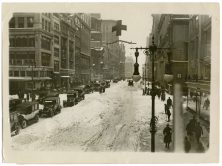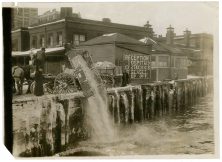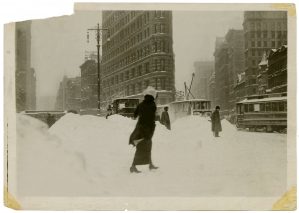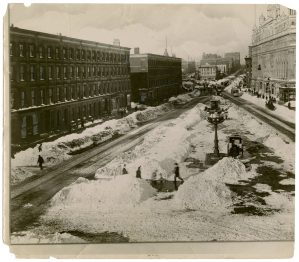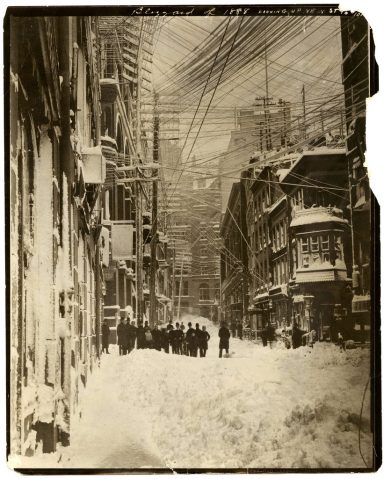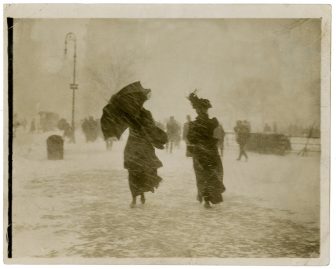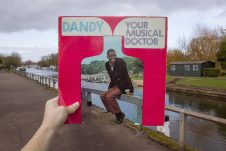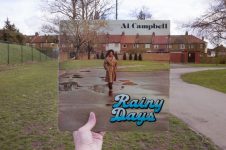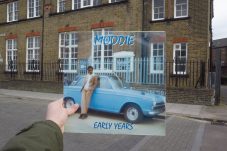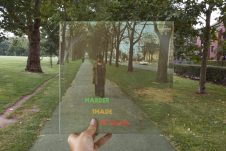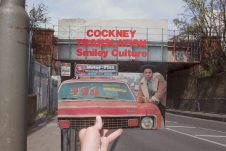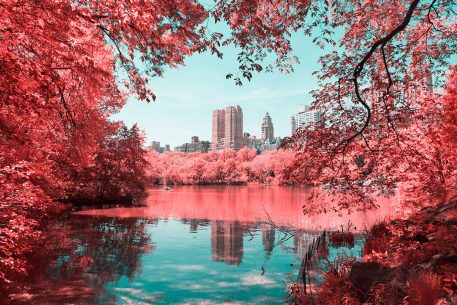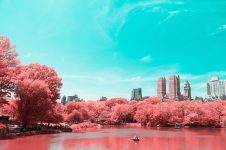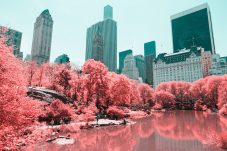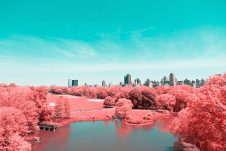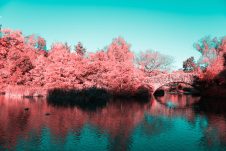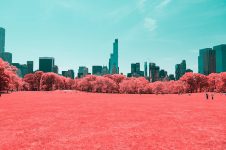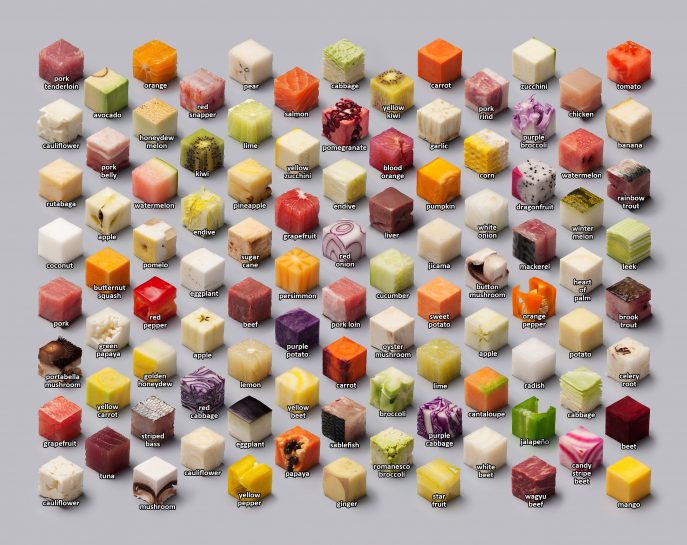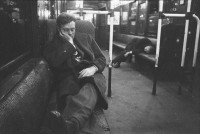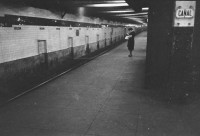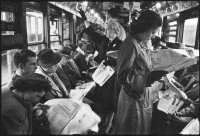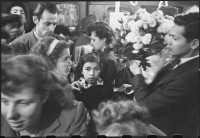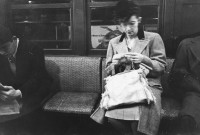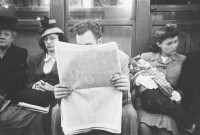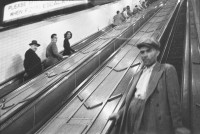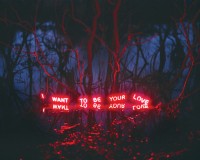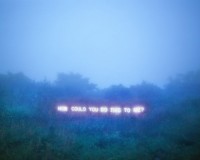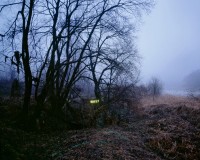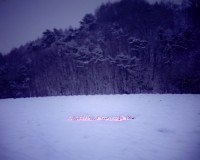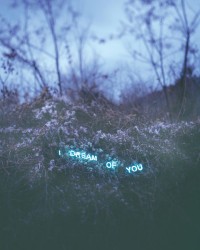Early New York Times photographs of snowstorms really capture the havoc, misery and peril a blizzard could visit on the city in the late 1800s and early 1900s. The Blizzard of 1888, for example, dumped 21 inches of snow on the city and killed an estimated 200 New Yorkers. But even a garden-variety snowstorm in those days would menace New York’s main form of transit — horses — and impose human suffering of all kinds, while posing the immense logistical challenge of clearing an entire metropolis of snow.
Pix
Retracing Reggae Record Sleeves, by Alex Bartsch
The series of photographer Alex Bartsch titled ‘Retracing Reggae Record Sleeves in London‘ shows close shots of reggae record covers placed in the city of London. The records were originally photographed in various obscure places around London between 1967 and 1987, and were selected by Alex’s own record collection.
(via ignant.com)
Infrared NYC, by Paolo Pettigiani
Taken from various locations within Central Park, Paolo Pettigiani’s eye-catching images portray the Big Apple in a new light. Positioning the city’s skyline as emerging from the park’s bright raspberry treescape, Pettigiani explains, “The purpose is to highlight the majesty and the contrast of nature included in the famous Big Apple’s skyscrapers.”
Having graduated in Visual Design and Communication from the Polytechnic University of Turin, the photographer counts his other big passion as snowboarding, and spends his winters as an instructor on the slopes.
“Cubes,” by Lernert & Sander
The idea for Cubes came to the Dutch artists, Lernert & Sander, when newspaper de Volkskrant commissioned them to take a photo for a food-related feature. The only guidance the newspaper gave was that the work had to be tied to food. But, “food is an overwhelming subject,” Lernert said. “You can go so many different ways. How can you photograph something when you can’t decide?” So they did the only thing that could be done: make all of the food seem equally important by cutting everything into uniform pieces, he said.
As for the rationale behind which food they chose to use for the cubes? That was determined by what they could find in local grocery stores and shops. And the foods couldn’t be processed, at least in the traditional sense. “We realized that if you cut up everything, it has this nastiness of everything becoming processed,” explained Lernert. “That’s the inside story.”
(via bonappetit.com)
Da Capo Photo Credit

One of my photos from Venice, now featured on Fotolia.com, was used in the book, Da Capo, by Antonio Morena, Donatella Melucci, Annamaria Moneti, and Graziana Lazzarino, with the caption “Un giorno di pioggia” (A day of rain).
Stanley Kubrick’s Underground NYC
In 1946, Stanley Kubrick, then aged only 18, took these photographs of the New York Subway and had them published by LOOK magazine. He photographed for the magazine from 1945 to 1950.
According to Helen O’Brian, head of LOOK’s photographic department, Kubrick generated the highest number of published articles of any photographer she had worked with. At the time, Kubrick was the youngest photographer LOOK had had on its books.
Jung Lee’s Neon Type Installations
Korean artist Jung Lee is showing her first exhibition in Dubai at Green Art Gallery. Lee has two series—Day and Night and Aporia, which means “coming to a dead end” in Greek.
The Aporia series was inspired by Roland Barthes’s A Lover’s Discoursem which tells the story of the ineptitudes of people in love. According to Barthes, when one falls in love the beloved becomes a mystery and one will ceaselessly try to figure out the reasons for their mysterious feelings. The desire to express one’s love produces lies and conflicts leading to a dead end. For Lee, those empty phrases reveal the solitude and sorrow of modern people today.
In the works entitled Day and Night, Lee focused on ‘God’ and ‘Love’ as the two main words reflecting her interpretation of Dante’s Divine Comedy where he highlighted the belief that true faith and love would lead you to heaven. Lee produces a cluster of those “divine” words and places them floating over the sea as reproductions or in a heap, demonstrating one’s desire to salvation. Thus Lee’s constructed photographs evoke amorous intensity with a coolness that enables the viewers to find their own way into this world, to have their memories stirred, to consider what it means to be alive in time.
(via @designmilk)

